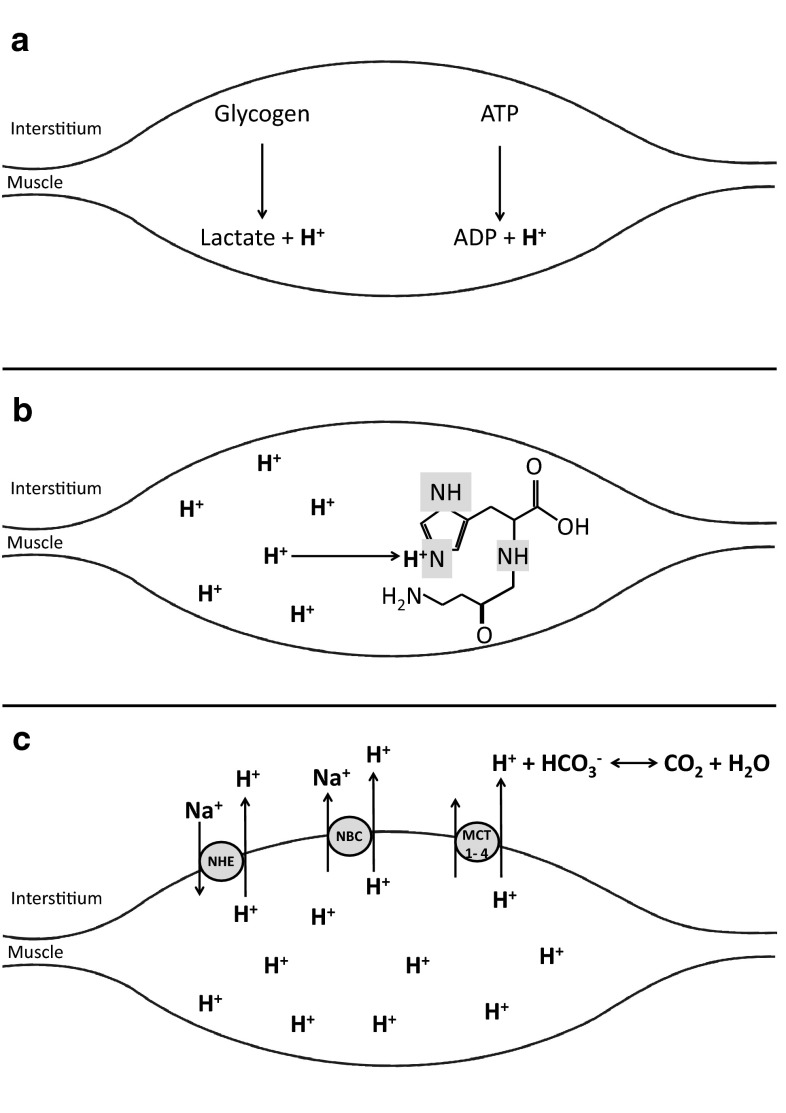Fig. 1.
High-intensity exercise increases the energy demand of the muscle, which is met by aerobic and anaerobic energy sources. a The primary contributions of ATP degradation and anaerobic glycolysis to the production of H+ during exercise. Physico-chemical buffers (e.g. carnosine) represent the first line of defence against changes in muscle pH, and are the only defence during exercise when blood flow is occluded. b The carnosine molecule with its imidazole side chain where the accumulating H+ are buffered. In addition to intracellular buffering, transmembrane H+ transport is a major controller of pH during dynamic exercise. c The main transporters, including the sodium–hydrogen exchanger (NHE), the sodium bicarbonate co-transporter (NBC) and the monocarboxlate transporter (MCT1, MCT4). The circulating H+ are subsequently buffered by bicarbonate anions. ADP adenosine diphosphate, ATP adenosine triphosphate

